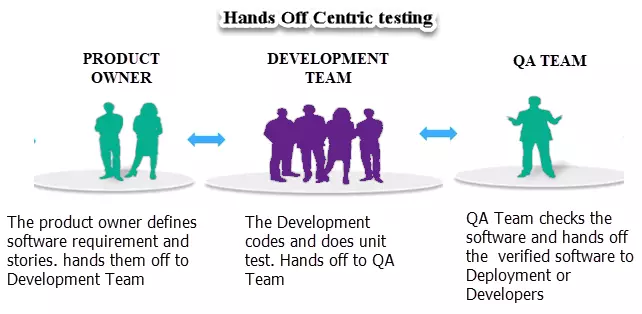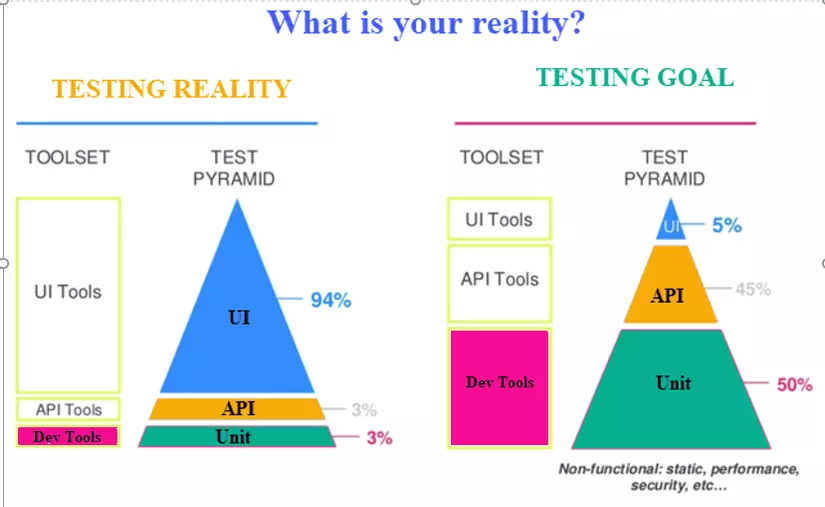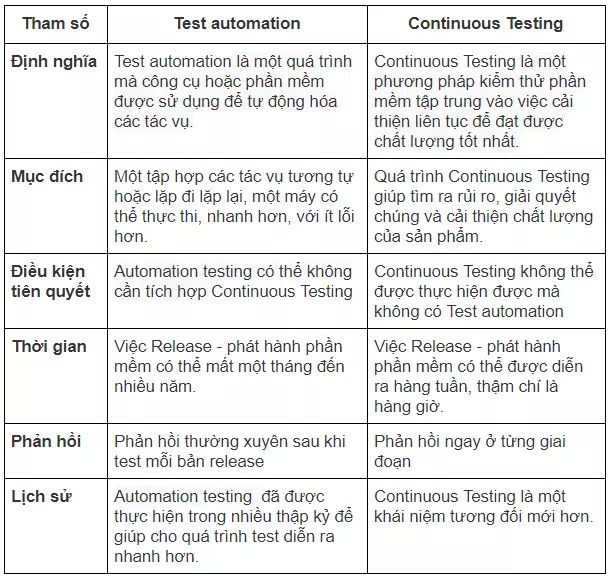What is Continuous Testing?
- Tram Ho
What is Continuous Testing in DevOps?
Continuous Testing is the process of testing early, testing regularly, testing everywhere, and automating. This is a quality assessment process at every step of the Continuous Delivery Process – the Continuous Delivery Process. Continuous Testing’s goal is to test early and test regularly. This process includes stakeholders such as Developer, DevOps, QA and the operating system.
What is different for Continuous Testing?

A project will have Development and QA defining phases. The QA team always wants more time to ensure quality. Their goal is quality so for them it is more important than the project progress.
However, businesses want to launch their software faster so that end users can experience the experience as soon as possible. With the newer version of the software, the more potential it is to promote and increase the company’s revenue potential. Therefore, a new way of testing has been developed.
Continuous – Continuous means the test is performed continuously, without interruption. In a Continuous DevOps process, a software change is transferred from Development to Testing for continuous implementation.

Code is moved from development, distribution, testing, and deployment
In the constant process, whenever the developer tests the code in the server source code it is like Jenkins automatically doing unit tests. If the test fails, the build is rejected and the developer will be notified. If the build passes the test, it will be deployed, QA servers will perform all kinds of tests, from functional to load tests. These tests are run in parallel. If the software passes all of the tests above, the software is deployed for production.

Continuous Testing is a small step in the Deploy Development, Integration, and Lifecycle.
What is the difference between Continuous Testing and Test Automation?
Test automation and Continuous Testing

What happens during Continuous Testing?
- Use tools to create test automation suites from user stories / user requirements
- Create a test environment
- Duplicate and anonymize production data to create test data
- Use service virtualization to test the API
- Perform parallel performance testing
The tool used for Continuous Testing
1) Tricentis
Tricentis is the industry’s No. 1 Continuous Testing platform and is accredited for reuse for software testing through DevOps. Tricentis uses risk-based testing, end-to-end testing automation without code, and more to bypass common software testing hurdles. Download: https://www.tricentis.com
2) Jenkins
Jenkins is a persistent integration tool written in the Java language. This tool can be configured through the GUI interface or console commands.
Download : https://jenkins.io/
3) Travis
Travis is a continuous testing tool hosted on GitHub. It provides and stores the variants on-premises. It offers many different languages and very good references.
Download : https://travis-ci.org/
4) Selenium:
Selenium is an open source continuous testing tool. It supports all leading browsers like Firefox, Chrome, IE and Safari. Selenium WebDriver is used to automate web application testing.
Download : https://www.seleniumhq.org/
Benefits of continuous testing
- Speed up the software distribution process
- Continuous testing improves code quality
- It helps to accurately assess business risks.
- It integrates seamlessly into the DevOps process
- Help create a fast and reliable process in hours instead of months.
- Speed up time to market with continuous feedback mechanism.
- Unifying traditional teams to meet the needs of a modern business. Disconnect between development, test, and commissioning teams.
- Test Automation helps to achieve consistency by maintaining the same configuration for all relevant tests.
- Emphasize business expectations to minimize business risks
- Provide a popular test access environment with Service Virtualization
Continuous Testing challenges
- The traditional approach is limiting cultural change among Development & QA professionals.
- Lack of DevOps skills and appropriate tools to test in Agile & DevOps environments.
- The heterogeneous test environment will never properly reflect the production environment.
- It is difficult to manage the test process and test data.
- Longer code integration cycle creates integration problems and slow bug fixes
- Insufficient and inefficient resources and test environment
- Complex application architecture and business logic are limited in using DevOps.
Conclusion:
- Continuous testing is a process of testing early, testing regularly, testing everywhere and being automated.
- The old test method was a hand-over. Software is transferred from one group to another
- Jenkins, Travis, and Selenium are popular continuous integration and testing tools.
- Continuous testing provides feedback that can be done at each stage of the delivery process.
- Continuous testing improves code quality
- The traditional approach is limiting cultural change among Development & QA professionals.
- Longer code integration cycle creates integration problems and slow bug fixes
The article is translated from the source: https://www.guru99.com/continuous-testing.html
